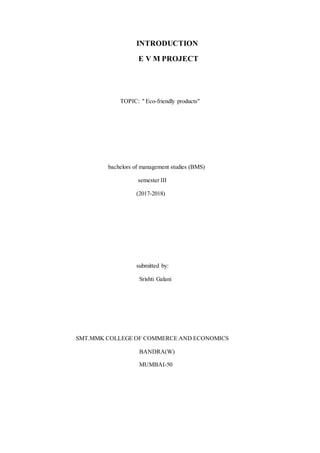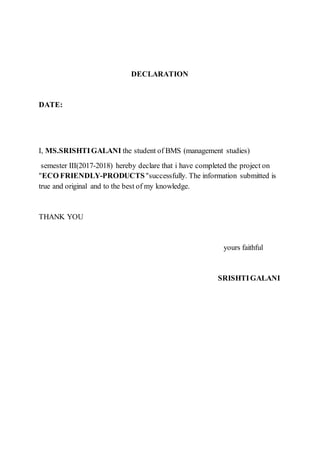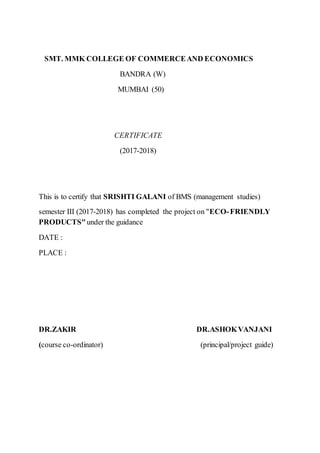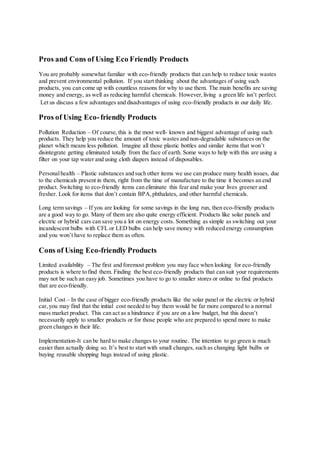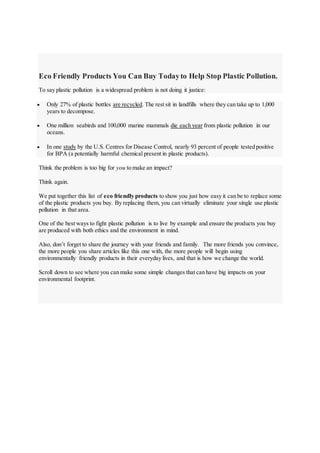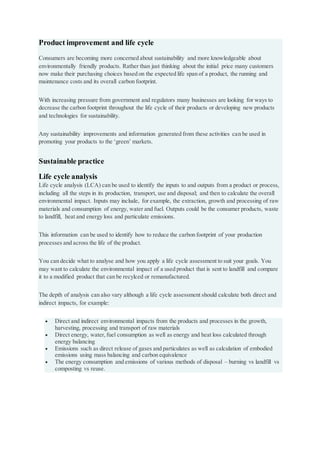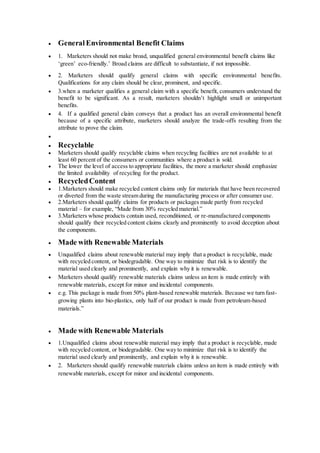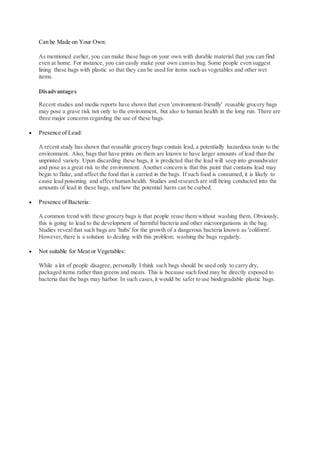The document is a Bachelor's project on eco-friendly products, emphasizing their importance in nature conservation and the demand for organic and biodegradable materials. It outlines the role of manufacturers in creating environmentally conscious products and discusses various eco-friendly practices and materials, such as organic clothing and biodegradable plastics. The project aims to educate and promote awareness regarding environmental issues while highlighting the benefits of sustainable living.
